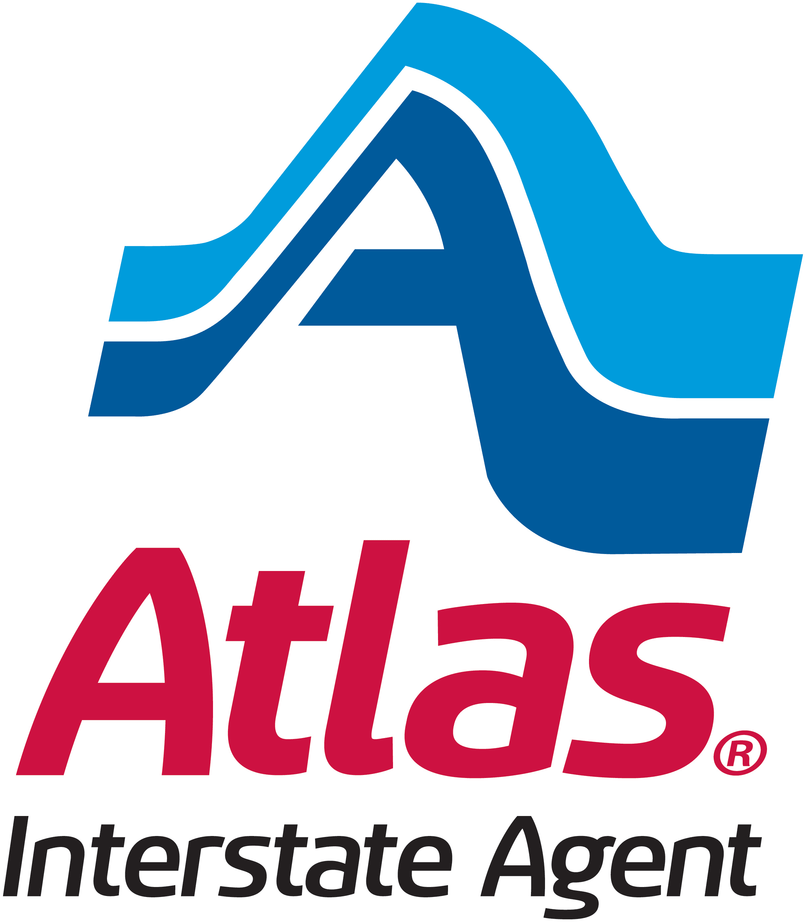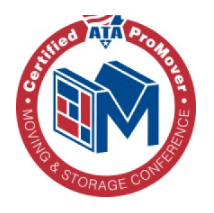What Does It Cost to Move Across Town? Expert Price Analysis

Moving costs can hit your wallet harder than expected – even for a simple cross-town relocation. Recent data shows local moves range from $501 for a studio apartment to $3,000 for larger homes, making it crucial to understand the real numbers behind your upcoming move.
Those figures might seem straightforward at first glance, but several key factors can significantly impact your final moving bill.
Seasonal pricing shifts, hourly rates, and service options create a complex web of cost considerations that deserve careful attention. Drawing from thousands of successful local moves, we’ve identified the critical elements that influence moving expenses – from basic labor costs to specialized handling fees for valuable items.
Understanding these components helps create an accurate budget while avoiding the surprise charges that often catch homeowners off guard. By breaking down the essential cost factors and exploring both professional and DIY moving approaches, you’ll gain the insights needed to make financially sound decisions for your local move.
Local Moving Costs At A Glance
Moving costs shouldn’t be a mystery. Drawing from thousands of successful relocations, we’ve compiled real-world pricing data to help you plan your budget effectively. Here’s what you can expect to pay for a local move in today’s market.
Average Price Ranges By Home Size
Your home’s size directly impacts your moving costs. Let’s break it down:
- Studio apartment: $501-$985
- 2-3 bedroom home: $966-$1,733
- 4-5 bedroom home: $1,941-$2,988
These ranges include essential services like professional moving crews, proper equipment, and local transportation. Keep in mind that unique items like pianos or artwork might require additional specialized handling.
Hourly Rates For Professional Movers
Professional moving crews bring efficiency and expertise to your relocation, with rates typically falling between $25-$100 per crew member per hour. Here’s what this means in practical terms:
- One-bedroom apartment: 3-5 hours ($240-$500 total labor)
- Three-bedroom house: 7-10 hours ($560-$1,000 total labor)
The investment in professional movers often pays for itself through proper handling of your belongings and significantly reduced moving time. Each crew member is trained in proper lifting techniques and efficient loading strategies.
Peak Vs. Off-Peak Season Pricing
Smart timing can lead to substantial savings on your move. Peak season (summer months and month-ends) typically commands premium rates due to high demand. Consider these money-saving alternatives:
- Off-peak savings: 20-30% lower rates
- Best times to move: Mid-month or winter months
- Added benefits: More flexible scheduling options
Making a mid-month or winter move not only reduces costs but often results in more personalized attention from your moving team. The same professional service comes with a lighter price tag simply by choosing strategic timing.
Breaking Down The Cost Components
Moving costs can feel overwhelming at first glance. Let’s break down exactly what goes into your moving estimate – from basic services to those extra details that make a real difference in your experience.
Base Moving Fees
Think of base moving fees as your moving day foundation – they cover the essential services needed to get from point A to point B. At Nelson Westerberg, we’ve structured these fees to be clear and total:
- Starting costs typically range from $200-300
- Includes initial setup and truck preparation
- Covers basic insurance protection
- Provides professional loading and unloading services
Labor Costs And Time Estimates
The backbone of any successful move is the moving team handling your belongings. Here’s what you can expect:
- Professional crews of 2-4 movers
- Hourly rates: $25-100 per mover
- One-bedroom apartment: 3-5 hours of work
- Three-bedroom home: 7-10 hours of work
These time frames account for careful packing, strategic loading, and methodical unloading to ensure your belongings arrive safely at their new home.
Transportation And Fuel Charges
Getting your belongings safely from one location to another involves specific transportation costs. Here’s the breakdown:
- Fuel charges typically represent 5-10% of total moving costs
- Distance between locations directly impacts pricing
- Number of required trips affects overall cost
- Current fuel prices influence final charges
Our pricing model clearly outlines these transportation costs upfront, so you’ll know exactly what to expect on moving day.
Equipment And Supply Expenses
Professional moving equipment makes the difference between a smooth move and potential damage to your belongings. Here’s what’s involved:
Basic Equipment (Usually Included):
- Heavy-duty dollies
- Protective furniture pads
- Professional-grade straps
- Specialized moving tools
Additional Supplies (Extra Cost):
- Moving boxes and packing tape: $100-300 depending on home size
- Bubble wrap and protective materials
- Custom crating for valuable items
- Specialty packing materials for fragile belongings
Remember, investing in proper equipment and supplies often saves money by preventing damage to your valuable items during the move.
Professional Moving Services Price Structure
Moving costs shouldn’t be a mystery. Understanding exactly what you’re paying for with professional moving services—from total coverage packages to specialty handling—can make all the difference.
With years of industry experience, we’ve gained valuable insights into moving service costs, where you can cut back on costs, and where it’s better to spend a bit more.
Full-Service Moving Packages
Think of full-service moving as your all-inclusive relocation solution. Every detail is handled by trained professionals, from carefully wrapping your coffee mugs to positioning your sofa in your new living room. Here’s what to expect:
- Local moves typically range from $1,250 to $1,400
- Studio/1-bedroom apartments: $501-$985
- 4-5 bedroom homes: $1,941-$2,988
These packages include professional packing materials, systematic loading, secure transportation, careful unloading, and complete unpacking services. Perfect for busy professionals, growing families, or anyone wanting a stress-free move.
Labor-Only Options
Need professional muscle without the full-service price tag? Labor-only services strike the sweet spot between DIY and full-service moving. Current market rates look like this:
- $25-$100 per hour per mover
- Most jobs require a two-person crew
- Larger homes may need 3-4 movers for efficiency
This service works brilliantly when you’ve handled the packing but want professionals to manage the heavy lifting and transportation. Many clients save 30-40% compared to full-service options while still getting expert handling of their belongings.
Specialty Item Handling Fees
That concert grand piano or 300-pound marble statue? They need special attention. Specialty handling ensures your valuable and unique items arrive safely through:
- Custom crating for artwork
- Piano-specific moving equipment
- Specialized padding and security measures
- Team members trained in antique handling
Pricing varies based on item complexity, weight, and required equipment. While standard furniture moves smoothly with regular service, these special pieces deserve – and receive – extra care and expertise.
Insurance And Liability Coverage
Protection for your belongings comes in two tiers:
Basic Coverage (Included):
- 60 cents per pound per article
- No additional cost
- Minimal protection for valuable items
Full-Value Protection (Optional):
- Costs 1-2% of declared value
- Covers full replacement value
- Recommended for high-value items
Smart movers typically opt for full-value coverage when moving irreplaceable items or high-end furnishings. This small investment provides significant peace of mind during your relocation journey.
DIY Moving Cost Analysis
Planning a DIY move? While the idea of saving money is appealing, let’s explore the real numbers behind handling your own moving logistics. Here’s a practical breakdown of costs and considerations to help you make a smart financial decision for your upcoming move.
Truck Rental Expenses
The rental truck forms the foundation of any DIY move, with costs that can surprise even careful planners. Base rates start at $19.95 per day for local moves, but that’s just the beginning. A more realistic daily cost ranges from $100-200 once you factor in:
- Per-mile charges (typically $0.69-$0.99 per mile)
- Fuel costs (trucks average 8-12 MPG)
- Insurance coverage ($15-30 per day)
- Environmental fees and taxes
For perspective: moving a 2-bedroom home locally often requires a 15-foot truck. Not sure if that’s the right size? Use a moving truck size requirement guide or consult with experts to ensure you’re selecting the correct vehicle.
Equipment And Supply Costs
Moving requires more than just a truck – you’ll need the proper equipment to move safely and efficiently. Here’s a realistic breakdown of essential supplies:
- Furniture dolly rental: $10-20 per day
- Hand truck rental: $10-20 per day
- Moving blankets: $10-15 each (most moves need 6-12)
- Professional-grade packing tape: $3-5 per roll
- Moving boxes: $1-5 each depending on size
- Bubble wrap and packing paper: $20-40
- Basic tool kit for furniture: $25-40
A typical 2-bedroom move requires $150-300 in supplies alone – and that’s being conservative with purchases.
Hidden Expenses To Consider
Even careful planners often encounter unexpected costs during DIY moves. Watch out for these common expenses:
- City parking permits ($25-75 in urban areas)
- Vehicle security deposits ($100-200)
- Additional insurance riders ($30-50)
- Cleaning supplies ($40-60)
- Emergency supply runs ($50-100)
- Food and drinks for helpers ($50-75)
The most significant hidden cost? Potential damage to belongings. Without professional moving insurance, replacing or repairing items comes straight from your pocket.
Time And Labor Investment
Time is money, and DIY moving demands plenty of both. Here’s what to expect for the actual moving day (not including packing):
One-Bedroom Apartment:
- 3-5 hours with 2-3 helpers
- Physical equivalent of 8-10 hours at the gym
Two-Bedroom Home:
- 5-7 hours with 3-4 helpers
- Comparable to a full day of intense physical labor
Three-Bedroom Home:
- 7-10 hours with 4-5 helpers
- Multiple days of physical recovery likely needed
Larger Homes:
- 10+ hours with 5+ helpers
- Professional equipment becomes essential
While professional movers charge $25-100 per hour per person, their specialized equipment and experience typically cut moving time in half.
Plus, they handle the heavy lifting, logistics, and liability – letting you focus on settling into your new home. For a clearer picture of total expenses, consider using a relocation cost calculator to weigh the costs of doing it yourself vs. hiring professionals.
Cost-Impacting Factors
Let’s talk about what really drives moving costs. While the basic quote might seem straightforward, several key elements can shift your final price tag. Here’s a practical breakdown of what impacts your moving budget – knowledge that can help you avoid unexpected charges.
Access And Parking Considerations
The path from the moving truck to your doorstep matters more than you might think. Here’s what professional movers evaluate when assessing accessibility:
- Distance between parking spots and your entrance
- Street parking rules and seasonal restrictions
- Building features like loading docks or service elevators
- Architectural challenges such as narrow hallways or tight corners
Real costs to consider: City parking permits for moving trucks typically run $50-100. When movers need to carry items more than 75 feet from truck to door, long-carry charges kick in at $75-150 per extra hour of work. Planning ahead for these logistics can help control these costs.
Elevator And Stair Fees
Multi-story buildings bring their own set of challenges to the moving equation. These factors directly impact your bottom line:
- Elevator availability and mandatory booking times
- Total number of staircase flights
- Wait times for shared elevator access
- Specialized equipment needs for stairwell navigation
A practical note on pricing: Expect stair fees around of $50-75 per flight. Buildings with elevators might seem easier, but shared elevator access can lead to time delays and additional labor charges. At Nelson Westerberg, we factor these details into your initial estimate to keep surprises off the final bill.
Extra Stop Charges
Making multiple stops during your move? Each additional location adds specific costs to consider:
- Standard stop fee: $50-100 per location
- Extra drive time between stops
- Additional loading/unloading labor
- Location-specific parking fees
Smart planning tip: Consolidating your move to fewer stops not only saves money but typically results in a more efficient moving day experience.
Storage Requirements
Sometimes a move isn’t point A to point B – temporary storage might enter the equation. Here’s what that means for your budget:
- Monthly storage rates: $50-300 based on space needed
- Extra handling fees for stored items
- Premium charges for climate-controlled units
- Security deposits and access considerations
At Nelson Westerberg, our climate-controlled storage facilities offer peace of mind when timing gaps occur. Whether you need a temporary home for your belongings for a few days or several months, we’ve got you covered with secure, accessible solutions.
Being upfront about these potential challenges during your initial moving consultation paves the way for more accurate estimates and smoother moves. Professional movers can develop better strategies when they know exactly what they’re dealing with – and that means fewer surprise costs for you.
Money-Saving Strategies
Looking to keep your moving costs in check without cutting corners? Smart planning can trim your expenses by 25-40% while maintaining top-notch service quality.
Here’s your practical guide to a budget-friendly move that doesn’t compromise on reliability. If you’re wondering how much budgeting is necessary, getting a clear picture of the amount to save for a move can help you prepare effectively.
Timing Your Move Strategically
Here’s an insider secret: the timing of your move can dramatically impact your wallet. Let’s break down the numbers:
Moving during off-peak seasons (October through April) typically saves 20-30% on total costs. Mid-week moves often run 10-15% cheaper than weekend relocations. Early morning slots (7-9 AM) can reduce labor hours by up to 2 hours compared to afternoon moves.
Pro tip: Combining these timing strategies could potentially save you hundreds, even thousands, on your moving costs. Our team regularly helps families identify these sweet spots where schedule flexibility meets maximum savings.
Decluttering Before Moving
Think of decluttering as paying yourself to move less. A thorough pre-move purge delivers concrete benefits:
- Cuts labor costs by reducing moving time (typically 1 hour less for every 100 cubic feet eliminated)
- Saves $50-100 on packing materials
- Reduces truck size needs – downsizing from a 26′ to a 20′ truck saves about $150
- Creates extra cash through garage sales or online marketplaces
Start this process 4-6 weeks before moving day. Focus first on seasonal items, rarely-used equipment, and outdated furniture. Each box you eliminate from your inventory translates to direct savings.
Smart Packing Approaches
Strategic packing isn’t just about throwing items in boxes – it’s about maximizing efficiency while minimizing costs:
- Source free boxes from local grocery stores, bookstores, and online community groups
- Transform household items into packing materials (blankets protect furniture, socks cushion glassware)
- Pack room-by-room using clear labeling systems (color-coding saves 30-45 minutes during unloading)
While DIY packing works for many items, consider professional packing for valuable pieces. The included insurance coverage often justifies the extra cost – replacing a damaged family heirloom costs far more than professional packing services.
It’s worth doing your homework on moving companies and their packing options to make informed decisions about when to hire professionals and to see what is included in their services.
Negotiating With Moving Companies
Most moving companies have more flexibility in their pricing than you might think. Here’s how to steer the conversation:
- Request price matching against written competitor quotes
- Ask about current seasonal promotions (savings often range from 10-25%)
- Explore bundled services – combining packing and moving can save 15% versus separate services
- Consider different payment methods – cash payments might earn a 5-10% discount
Remember: rock-bottom prices often come with hidden costs. Focus on finding that sweet spot where reasonable rates meet reliable service. The goal is maximizing value while ensuring your belongings arrive safely at their new home. Doing some research on different moving companies can further aid in negotiating deals and selecting the right partner for your move.
A quality moving partner will help identify practical ways to reduce costs without cutting corners on service. They’ll work with your budget while maintaining the high standards essential for a successful move.
Frequently Asked Questions
- How far in advance should I book local movers?
Here’s a practical timeline: Book your local move 4-6 weeks ahead to secure your preferred schedule. Moving during peak season (May through September)? Give yourself 6-8 weeks of lead time.
While last-minute bookings are possible, they often come with premium rates and you might miss out on our most experienced moving teams. Planning ahead helps lock in better rates and ensures you get the service quality you deserve.
- What additional fees might appear on my final bill?
Let’s break down the potential extra costs you should know about. Standard additional charges include stair fees ($50-75 per flight), elevator access ($75-100), and long carry charges ($75-100) when trucks can’t park close to your entrance.
At Nelson Westerberg, transparency matters – we provide detailed upfront estimates covering these possibilities. During your initial consultation, we’ll review an in-depth list of potential fees specific to your move.
- Should I choose hourly rates or flat-rate pricing?
For local moves under 50 miles, hourly rates typically make the most financial sense. Current market rates run between $25-100 per mover, and most local moves need 2-4 movers to get the job done efficiently.
Do you have a more complex move with multiple stops or need extensive packing help? A flat rate might be your better option. Our moving specialists can crunch the numbers both ways to find the most cost-effective choice for your situation.
- How much should I budget for packing supplies?
For a typical 2-3 bedroom home, plan on investing $150-300 in quality packing materials. This budget covers essential supplies: 40-60 sturdy boxes ($1-3 each), several rolls of packing tape ($3-4 per roll), protective bubble wrap ($20-30), and packing paper ($20-25).
While professional packing services represent a larger upfront cost, they include all necessary materials and often prove more economical when protecting valuable or delicate items.
- What insurance coverage do I need for a local move?
Starting with the basics: Released Value Protection comes standard at no extra charge, covering items at $0.60 per pound. For peace of mind, we recommend Full Value Protection, which ensures you’re covered for the current market value of your belongings.
Moving specialty items? Additional coverage options are available. Smart tip: Check your existing homeowner’s or renter’s policy – it might already provide moving coverage, potentially saving you money on extra insurance.
Conclusion
Moving across town requires smart planning that balances quality service with your budget. Here’s what our years of experience tell us: local moving costs typically range from $500 for a studio apartment to $3,000 for larger homes, with several key factors affecting your final price:
- Size and volume of your belongings
- Distance between locations
- Timing of your move
- Additional services needed (packing, storage, etc.)
While it’s tempting to choose the lowest-priced option, consider this: professional moving services often prove more cost-effective long-term. A skilled moving team brings proper equipment, efficient processes, and – most importantly – the expertise to protect your belongings. Think of it as an investment in a smoother transition to your new home.
Smart planning starts with these practical steps:
- Get detailed quotes from 3-4 reputable movers
- Schedule your move during off-peak times when possible
- Create a detailed inventory of what’s moving
- Discuss insurance options and coverage details
At Nelson Westerberg, we believe in transparent pricing and personalized solutions. Our team works alongside you to create a moving plan that fits both your practical needs and financial considerations. Ready to explore your options? Let’s make your local move as smooth and cost-effective as possible.
Related Articles
Where to Move from Texas: Top 10 States for Ex-Texans in 2025

Where to Move from Texas: Top 10 States for Ex-Texans in 2025 Record numbers of Texans are exploring life beyond state lines, driven by soaring housing costs, evolving career landscapes, and the search for new lifestyle opportunities. The decision to leave Texas stirs intense emotions – after all, the Lone Star State‘s unique culture and […]
Read MoreHow to Move a House from One Location to Another: Planning to Completion

Relocating an entire house might seem like something out of a movie, but this remarkable feat of engineering happens more often than you’d think. From preserving historic mansions to saving beloved family homes from coastal erosion, house moving represents the intersection of cutting-edge engineering and practical problem-solving. With project costs typically ranging from $18,000 to […]
Read More




